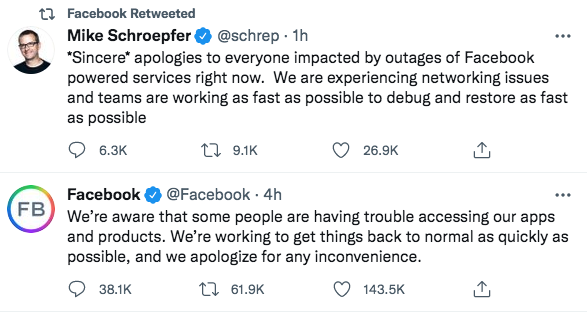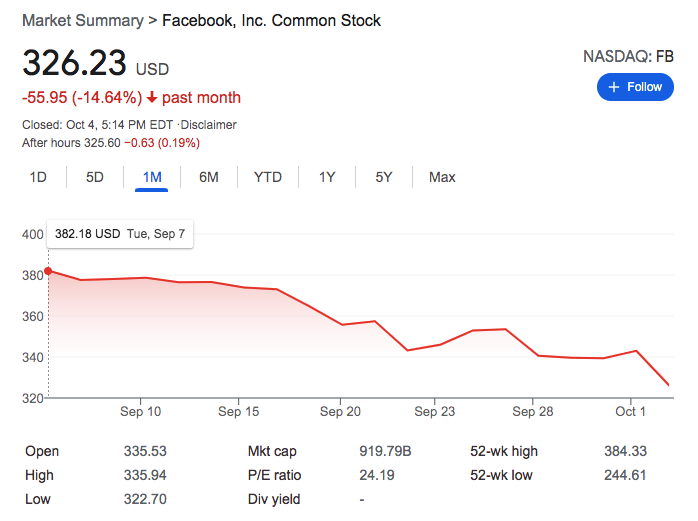Why You Need Business Continuity Plans
FaceBook, Instagram And WhatsApp Just Had A Really Bad Monday
It’s the end of the work day here on the east coast and I see that the Facebook is still unavailable. Facebook acknowledged the problem in the following two Tweets.

While we don’t know the exact cause of the downtime, and whether it was user error, some nefarious assault, or just an unexpected calamity of errors, we can learn a few things about this outage at this point.
Downtime Is Expensive
While we may never know the exact cost of the downtime experienced today, there are a few costs that can already measured. As of this writing, Facebook stock went down 4.89% today. That’s on top of an already brutal September for Facebook and other tech stocks.

But what was the real cost to the company? With many brands leveraging social media as an important part of their marketing outreach, how will this outage impact future advertising spends? Minimally I anticipate advertisers to investigate other social media platforms if they have not done so already. Only time will tell, but even before this outage we have seen more competition for marketing spend from other platforms such as TickTock.
Plan For The Worst-Case Scenario
Things happen, we know that and plan for that. Business Continuity Plans (BCP) should be written to address any possible disaster. Again, we don’t know the exact cause of this particular disaster, but I would have to imaging that an RTO of 5+ hours is not written into any BCP that sits on the shelf at Facebook, Instagram or WhatsApp.
What’s in your your BCP? Have you imagined any possible disaster? Have your measured the impact of downtime and defined adequate recovery time objective (RTO) and recovery point objective (RPO) for each component of your business? I would venture to say that it’s impossible to plan for every possible thing that can go wrong. However, I would advise everyone to revisit your BCP on a regular basis and update it to include disasters that maybe weren’t on the radar the last time you reviewed your BCP. Did you have global pandemic in your BCP? If not, you may have been left scrambling to accomodate a “work from home” workforce. The point is, plan for the worst and hope for the best.
Communications In A Disaster
Communications in the event of a disaster should be its own chapter in your BCP.
One Facebook employee told Reuters that all internal tools were down. Facebook’s response was made much more difficult because employees lost access to some of their own tools in the shutdown, people tracking the matter said.
Multiple employees said they had not been told what had gone wrong.
A truly robust BCP must include multiple fallback means of communication. This becomes much more important as your business spreads out across multiple building, regions or countries. Just think about how your team communicates today. Phone, text, email, Slack might be your top four. But what if they are all unavailable, how would you reach your team? If you don’t know you may want to start investigating other options. You may not need a shortwave radio and a flock of carrier pigeons, but I’m sure there is a government agency that keeps both of those on hand for a “break glass in case of emergency” situation.
Summary
You have a responsibility to yourself, your customers and your investors to make sure you take every precaution concerning the availability of your business. Make sure you invest adequate resources in creating your BCP and that the teams responsible for business continuity have the tools they need to ensure they can do their part in meeting the RTO and RPO defined in your BCP.
